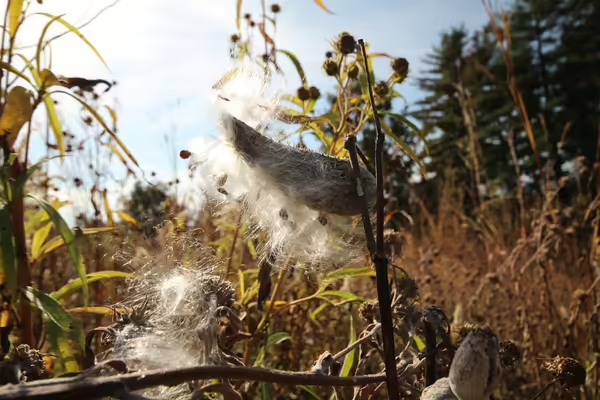
URBANA, Ill. – Illinois needs to plant milkweed, and a lot of it, over the next 18 years to ensure the state’s official insects, monarch butterflies, survive.
Kelly Allsup, University of Illinois Extension horticulture educator, says the task of planting 150 million new milkweed stems by 2038, championed by the Illinois Monarch Project, needs public buy in.
“Major statewide strategies, such as updated roadside mowing guidelines, creating habitat in natural areas, and allowing it to grow in farmland not in production, may not be enough,” Allsup says. “Monarchs may need homeowners to plant a larger patches of milkweed.”
The prairie state, as its name suggests, was once covered in grasses and flowers that were habitat and food for migrating butterflies. Development has reduced the availability of milkweeds, which is the only food source for monarch caterpillars. Monarchs (Danaus plexippus) will be considered for inclusion on the Endangered Species list in December 2020.
Anyone can grow milkweed in their yard or garden, Allsup says. “Do you have an alley that does a good job at growing weeds? Perhaps you are ready to move on from a ditch full of daylilies, or you have an empty garden bed. One 10-square-foot garden can hold 150 stems of milkweed.”
Harvesting and germinating milkweed seeds
While there are a number of different species of milkweed, monarchs prefer swamp milkweed (Asclepias incarnata), Butterfly weed (Asclepias tuberosa), Common milkweed (Asclepias syriaca), Prairie milkweed (Asclepias sullivantii), and Whorled milkweed (Asclepias verticillata).
“With permission from landowners, you can pick milkweed seed pods this fall rather than buying seeds or purchasing plants,” Allsup says. “Once harvested, you can either plant them in the fall or wait until spring.”
Each pollinated milkweed flower forms one to two large teardrop-shaped green pods that turn brown or maroon as they mature.
“Pick pods when they are dry and just starting to split open,” Allsup says “Seeds can’t germinate if they have not been allowed enough time to mature on the plant.”
Allow pods to dry out then pry them open and separate the seeds by holding one end and stripping the seeds away from the white fluff known as floss.
“Another way to separate the mature seeds from the floss is to place the seeds in a paper bag with a coin,” Allsup says. “Cut a hole in the bottom of the bag so the seeds fall out after a good shaking.”
Once you’ve harvested the seeds you can plant them this fall or store seeds in a dry and cool place in a labeled paper envelope with species, date, and location to plant them in the spring.
Milkweed seeds need to be stratified and require cool, moist conditions, to germinate. Growers can accomplish this at home by placing seeds in a damp paper towel in the refrigerator for four to six weeks. Start seed germination in early April to have them ready for planting after the last frost in May.
Steps to planting milkweed
- Clear out any weeds or existing plants and water the soil.
- Place germinated seeds about 12 inches apart and 1 to 2 inches deep. Tip: Plant two seeds per hole and if they both germinate, remove the weakest one.
- Cover with moist soil.
- Put flags or bamboo sticks near your planting holes and mulch with straw.
- When the seedlings come up, consider transplanting or culling plants to achieve 2 foot spacing.
- Weed aggressively every two weeks as the plants grow bigger. A fertilizer can be used when the seedlings start to grow to give them a jump start, but after that, fertilizer is generally not needed, Allsup says.
“Milkweed gardeners can record their efforts so the Illinois Monarch Project knows if they are reaching their goal,” Allsup says. Milkweed plantings can be submitted at monarchwatch.org/waystations/#register. Illinois gardeners can also register their habitat as a Pollinator Pocket or Monarch Waystation at extension.illinois.edu/cfiv/pollinator-pockets.
PHOTO: Pick milkweed seed pods when they are dry and just starting to split open. Seeds can’t germinate if they have not been allowed enough time to mature on the plant. Photo credit Elizabethe Whale.
SOURCE: Kelly Allsup, Horticulture Educator, Illinois Extension
ABOUT EXTENSION: Illinois Extension leads public outreach for the University of Illinois by translating research into action plans that allow Illinois families, businesses, and communities to solve problems, make informed decisions, and adapt to changes and opportunities.
PHOTO ACCESS: The photo in this article is available for media use.